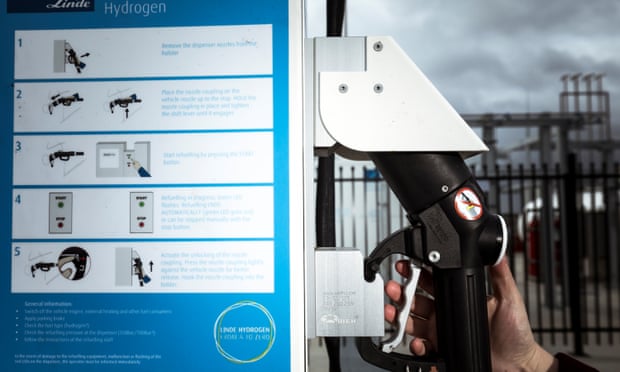Extract from The Guardian
NSW and Victorian governments say at least four refuelling stations will be built along Hume Highway.

Mon 18 Jul 2022 03.30 AEST
Last modified on Mon 18 Jul 2022 03.31 AESTIn a joint announcement the two governments say they will each spend $10m on grants to manufacture about 25 hydrogen-fuelled trucks and at least four refuelling stations along the 840km Hume Highway between Sydney and Melbourne.
The announcement, which comes on the back of a push from the trucking industry for help transitioning away from fossil fuels, followed the Queensland government’s announcement last week that it planned to build Australia’s first hydrogen refuelling pump at a public service station in Brisbane.
NSW’s energy minister, Matt Kean, said the grants were designed to show “the potential of renewable hydrogen for heavy vehicles with the goal of transitioning the freight sector to zero emissions energy sources”.
“The Hume Hydrogen Highway will create new jobs and attract investment to NSW and Victoria,” Kean said. “It’s expected to drive uptake of renewable hydrogen in the heavy transport sector.”
Victoria’s energy and environment minister, Lily D’Ambrosio, said transport accounted for 25% of the state’s total carbon footprint and the partnership between the states was vital to decarbonise the sector.
“Working together is what it will take to push further in the challenge of technique, emissions across the country,” she told Guardian Australia.
D’Ambrosio said the trucking industry was an “important next step” in Victoria’s emissions reduction plan.
“This investment will go a long way to that leadership and produce an outcome and to demonstrate what can happen more broadly when it comes to heavy freight vehicle transportation,” she said.
The Victorian government has committed to achieving net zero emissions by 2050.
D’Ambrosio said the state would welcome federal funding from the Albanese government in the project.
While still in its infancy in Australia, renewable hydrogen is often touted as a future replacement for diesel-powered vehicles. A refuelling station solely dedicated to hydrogen-powered vehicles was opened in the ACT last year, which mainly services some government vehicles. Other private refuelling sites have been built, including at a Toyota facility in Melbourne.
The Morrison government’s 2019 National Hydrogen Strategy argued that by 2030 the cost of the technology could be “the same as or even cheaper than using fossil fuels”.
But while manufacturers such as Toyota have invested heavily in the technology, the market has increasingly focused on electric vehicles.
However, Australian researchers have touted advances in technology making so-called stretch targets for hydrogen fuel more achievable.
Kean said the NSW, Victorian and Queensland governments would collaborate on establishing a network of refuelling stations along Australia’s east cost by 2026.
Those plans also include establishing stations on the Pacific and Newell highways.
“What we’re looking for is strong industry collaboration between refuelling station operators, fleet operators, truck manufacturers, major freight customers and other entities which will be vital to the success of the initiative,” Kean said.
Australia’s heavy-vehicle industry has been calling on governments to help transition to renewable energy sources.
In January the Australian Trucking Association produced a joint report with the Electric Vehicle Council recommending changes to vehicle standards and investment in recharging stations, with the aim for all new heavy vehicles to be using renewable fuels by 2040.
That report suggested that the bulk of investment should go towards electric vehicles for lighter trucks, but said hydrogen could play “a vital role” for heavier transport.
“With the right policy settings, trucking and freight businesses in Australia are ready to make the transition to electric and zero emission trucks,” the report stated.
“By 2025, businesses and operations with heavy vehicle fleets see a significant role for electric, hydrogen and alternatively powered heavy vehicles.”


No comments:
Post a Comment